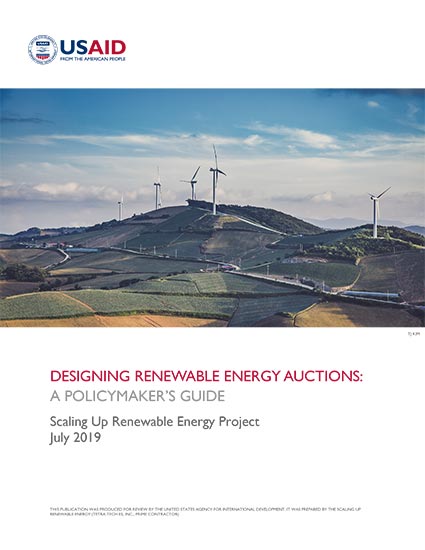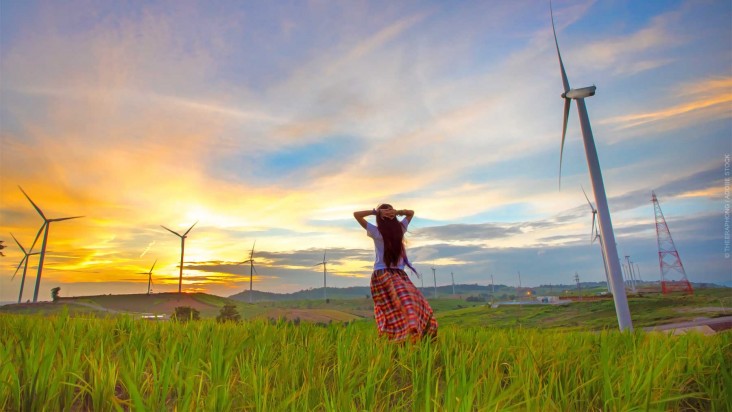- Energy Home
- How We Work
- Programs & Initiatives
- EmPOWERing Women and Girls
- Competitive Energy Procurement
- Auctions Toolkit
- Introduction
- Design
- Renewable Energy Integration
- Training
- Country Experience
- Resources
- Why Auctions?
- Designing RE Auctions
- Stages of Design
- Design Process
- Prequalification & Ceiling Prices
- Financial Guarantees & Penalties
- System-friendly Procurement
- Technology Selection
- Variable RE Forecasting
- Impact on System Operations
- System-friendly Procurement in Bangladesh
- Variable RE in Bangladesh
- Auctions Toolkit
- Toolkits
- Monitoring & Evaluation
- Resources
- Stories
Speeches Shim
The Policymaker’s Guide introduces key auction design concepts for energy ministries, utilities, regulators, and other stakeholders who make decisions on the design of renewable energy auctions.
Policymakers have many objectives for auctions such as promoting private sector investment and socioeconomic progress. Adapting the auction design to local framework conditions and priorities is one of the key steps to ensure success in achieving auction policy objectives. Good auction design can enable policymakers to advance many objectives, including reaching renewable energy targets, lowering generation costs, supporting the integration of renewable energy, and creating local jobs. Good auction design also mitigates risks to all parties and reduces the chance of project construction delays, non-completion, and underperformance during the operation phase.
Auctions are transparent and competitive mechanisms that allow countries to procure clean energy at prices that reflect those in the market. Unlike negotiated procurements or feed-in tariffs (FITs), auctions have the potential to provide price discovery, reduce windfall profits for power producers, and give cash-strapped utilities and consumers lower prices for electricity by forcing companies to compete against one another on price. Auctions can also increase the ability of governments to steer the build-up of RE capacities more precisely over time and location, and help spur private investment by guaranteeing that projects will be awarded fairly. By 2019, 109 countries around the world had held auctions, up from 98 in 2018.
Auctions are an important tool for achieving energy sector goals. In order to successfully plan and implement an auction, policymakers at the start of the design process must define policy goals. Policy goals can go beyond adding new power capacity at low cost to include objectives such as dispatchability, energy diversification, improved and more efficient renewable energy grid integration, matching generation and transmission buildup, and local value creation, which results in socioeconomic benefits for local communities.
Recognizing the tradeoffs between policy goals is part of the auction design process. For example, requiring a bid or completion bond from bidders helps ensure that selected bidders are serious and aim to commission projects without delay. On the other hand, this can increase financing costs and lead to higher bid prices. It is important to map tradeoffs and agree on the prioritization of policy goals and then ensure they are reflected in the auction’s design.
Preparing and Implementing Auctions
Once policy goals are defined, policymakers must assess the market, project development cycles, and available institutional capacities. This ensures that the design of the auction fits the local framework conditions and helps identify areas within the policy framework that need to be adapted to adequately distribute risk between renewable energy producers and the public.
The success of an auction strongly depends on how it fits local market conditions. Project development and operation cycles also inform the auction design. Knowing the project development duration and risk of project failure allows policymakers to decide which permits should be required before the auction takes place. Unclear permitting processes, overlapping roles, and limited capacity within the permitting authorities can delay the project development process. Time needed by developers to secure land rights and procure a grid connection permit also need to be considered.
Key steps of the auction design process include:
- Drafting required documents;
- Preparing relevant institutions through training;
- Securing enough funding for institutions to prepare the auction; and
- Building the market by engaging bidders and financial institutions.
Designing Simple Auctions
The introduction of an auction creates a market for renewable energy remuneration. The rules by which this remuneration is determined and allocated are known as design elements. They need to be transparent and well understood by both auctioning authorities and bidders.
For countries with limited market maturity and institutional capabilities, it is important to create a simple auction design. However, more complex auctions can better react to different policy preferences and market conditions. Key design elements can be grouped into four categories:
- General Design: The auction’s volume, whether it is site-specific or site agnostic, the technology type, and the technology size
- Auction Procedure: The way bids are submitted and selected during the bidding process, decisions on static vs. dynamic auctions, bid selection criteria, pricing rules, and number of rounds
- Conditions for Participation: The requirements bidders or projects must meet to participate in the auction, including technical requirements, financial guarantees, and the ceiling price
- Deadlines and Penalties: The timeframe to build projects and the consequences for bidders of the non-completion or delayed realization of awarded projects.



Comment
Make a general inquiry or suggest an improvement.